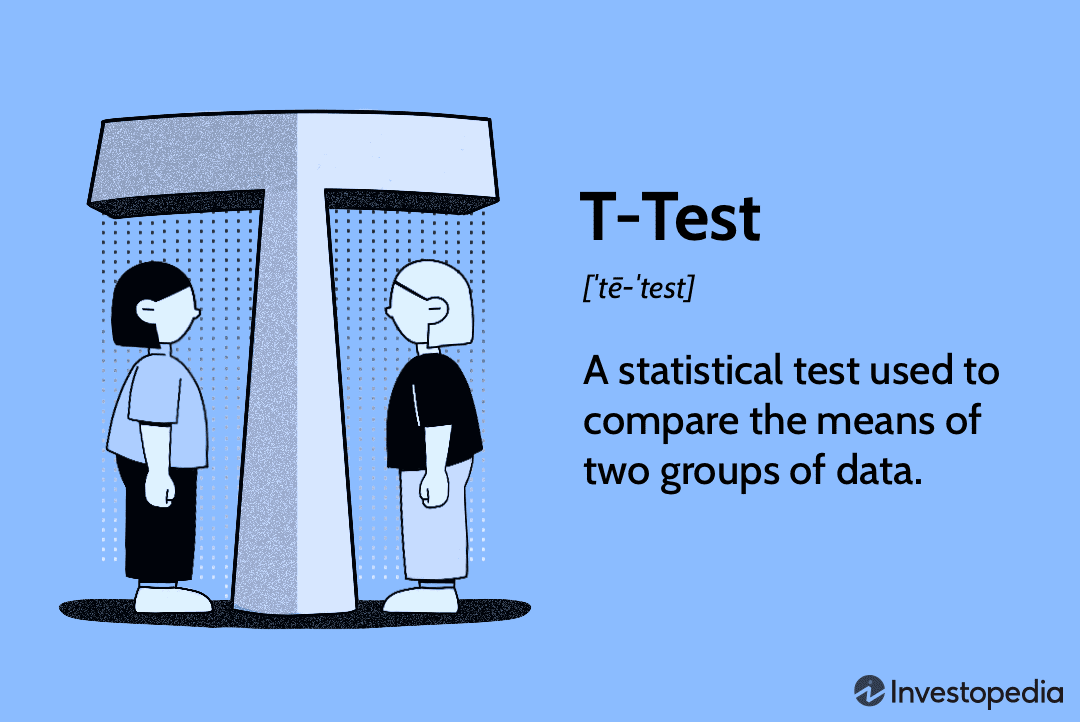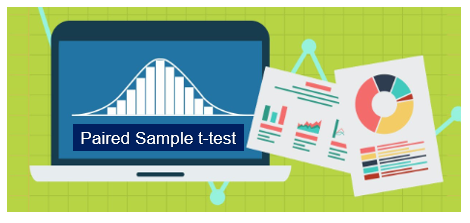The t-test is a statistical test used to compare the means of two independent samples. It is used to determine whether there is a statistically significant difference between the means of two groups. The t-test is one of the most commonly used tests in statistics and is used to compare the means of two samples to determine if they are significantly different from each other. It is also used to compare the means of two populations to determine if they are significantly different from each other. The t-test is a powerful tool for making inferences about the population from which the samples were drawn.
Exploring the Basics of the T-Test: What is it and How Does it Work?
The t-test is a statistical test used to compare the means of two independent samples. It is one of the most commonly used tests in the field of statistics and is used to determine whether the means of two samples are significantly different from each other. The t-test is also known as the Student’s t-test, named after its inventor, William Sealy Gosset, who published it under the pseudonym “Student” in 1908.
The t-test is used to compare the means of two independent samples. It is based on the assumption that the two samples are drawn from populations with the same mean and variance. The t-test is used to determine whether the difference between the means of the two samples is statistically significant. The t-test is used to compare the means of two independent samples, and it is based on the assumption that the two samples are drawn from populations with the same mean and variance.
The t-test is used to compare the means of two independent samples. It is based on the assumption that the two samples are drawn from populations with the same mean and variance. The t-test is used to determine whether the difference between the means of the two samples is statistically significant. The t-test is used to compare the means of two independent samples, and it is based on the assumption that the two samples are drawn from populations with the same mean and variance.
The t-test is used to compare the means of two independent samples. It is based on the assumption that the two samples are drawn from populations with the same mean and variance. The t-test is used to determine whether the difference between the means of the two samples is statistically significant. The t-test is used to compare the means of two independent samples, and it is based on the assumption that the two samples are drawn from populations with the same mean and variance.
The t-test is used to compare the means of two independent samples. It is based on the assumption that the two samples are drawn from populations with the same mean and variance. The t-test is used to determine whether the difference between the means of the two samples is statistically significant. The t-test is used to compare the means of two independent samples, and it is based on the assumption that the two samples are drawn from populations with the same mean and variance.
The t-test is a powerful tool for determining whether the difference between two means is statistically significant. It is important to note that the t-test is only valid when the assumptions of the test are met. If the assumptions are not met, then the results of the t-test may not be reliable. It is also important to note that the t-test is only one of many statistical tests that can be used to compare the means of two independent samples.
A Comprehensive Guide to Interpreting the Results of a T-Test
A t-test is a statistical test used to compare the means of two independent samples. It is commonly used to determine whether there is a statistically significant difference between the means of two groups. This guide provides an overview of the t-test and explains how to interpret the results.
The t-test is based on the t-distribution, which is a probability distribution that is used to compare the means of two independent samples. The t-distribution is similar to the normal distribution, but it is more spread out and has heavier tails. This means that it is more likely to produce extreme values than the normal distribution.
The t-test is used to compare the means of two independent samples. It is calculated by subtracting the mean of one sample from the mean of the other sample and dividing the result by the standard error of the difference between the two means. The result is the t-statistic.
The t-statistic is then compared to a critical value from the t-distribution. The critical value is determined by the degrees of freedom and the desired level of significance. If the t-statistic is greater than the critical value, then the difference between the two means is statistically significant.
The results of a t-test can be interpreted in terms of the effect size. The effect size is a measure of the magnitude of the difference between the two means. It is calculated by dividing the difference between the two means by the standard deviation of the sample.
The results of a t-test can also be interpreted in terms of the power of the test. The power of the test is a measure of the probability that the test will detect a statistically significant difference between the two means if one actually exists. The power of the test is determined by the sample size, the effect size, and the desired level of significance.
In conclusion, the t-test is a statistical test used to compare the means of two independent samples. The results of the t-test can be interpreted in terms of the effect size and the power of the test. If the t-statistic is greater than the critical value, then the difference between the two means is statistically significant.
How to Choose the Right T-Test for Your Data Analysis
When conducting a data analysis, it is important to choose the right t-test for the data set. The t-test is a statistical test used to compare the means of two groups of data. Depending on the type of data and the research question, there are several types of t-tests that can be used.
The first step in choosing the right t-test is to determine the type of data being analyzed. If the data is continuous, meaning it is measured on a scale, then a parametric t-test should be used. Examples of continuous data include height, weight, and temperature. If the data is categorical, meaning it is divided into categories, then a non-parametric t-test should be used. Examples of categorical data include gender, race, and marital status.
The second step is to determine the research question. If the research question is to compare the means of two independent groups, then an independent samples t-test should be used. If the research question is to compare the means of two related groups, then a dependent samples t-test should be used.
The third step is to determine the type of t-test. If the data is normally distributed, then a one-sample t-test or a two-sample t-test should be used. If the data is not normally distributed, then a Mann-Whitney U test or a Wilcoxon signed-rank test should be used.
Finally, it is important to consider the sample size. If the sample size is small, then a non-parametric t-test should be used. If the sample size is large, then a parametric t-test should be used.
In conclusion, when conducting a data analysis, it is important to choose the right t-test for the data set. The type of data, the research question, the type of t-test, and the sample size should all be considered when selecting the appropriate t-test.
A Step-by-Step Guide to Conducting a T-Test in Excel
A t-test is a statistical test used to compare the means of two independent samples. It is commonly used to determine if there is a significant difference between the means of two groups. This guide will provide step-by-step instructions on how to conduct a t-test in Microsoft Excel.
Step 1: Prepare the Data
The first step is to prepare the data for the t-test. This includes organizing the data into two columns, one for each sample. Make sure that the data is in numerical form and that there are no missing values.
Step 2: Calculate the Means
Once the data is organized, calculate the means of each sample. To do this, use the AVERAGE function in Excel. Select the range of cells containing the data for each sample and enter the AVERAGE function.
Step 3: Calculate the Standard Deviations
Next, calculate the standard deviations of each sample. To do this, use the STDEV function in Excel. Select the range of cells containing the data for each sample and enter the STDEV function.
Step 4: Calculate the t-Statistic
Once the means and standard deviations have been calculated, the t-statistic can be calculated. To do this, use the TTEST function in Excel. Enter the means and standard deviations of each sample into the TTEST function.
Step 5: Interpret the Results
The final step is to interpret the results of the t-test. The t-statistic will be displayed in the output of the TTEST function. If the t-statistic is greater than the critical value, then there is a significant difference between the means of the two samples. If the t-statistic is less than the critical value, then there is not a significant difference between the means of the two samples.
By following these steps, you can easily conduct a t-test in Microsoft Excel. This guide has provided step-by-step instructions on how to prepare the data, calculate the means and standard deviations, calculate the t-statistic, and interpret the results.
Understanding the Assumptions of the T-Test and How to Test Them
The t-test is a statistical test used to compare the means of two independent samples. It is a parametric test, meaning that it assumes that the data follows a normal distribution and that the variances of the two samples are equal. These assumptions are important to consider when interpreting the results of a t-test, as violations of these assumptions can lead to inaccurate results.
The assumption of normality can be tested using a variety of methods, such as a visual inspection of the data or a formal test such as the Shapiro-Wilk test. If the data is not normally distributed, a non-parametric test such as the Mann-Whitney U test should be used instead.
The assumption of equal variances can be tested using the Levene’s test. This test compares the variances of the two samples and determines if they are significantly different. If the variances are significantly different, a Welch’s t-test should be used instead.
It is important to consider the assumptions of the t-test when interpreting the results. If the assumptions are violated, the results may not be reliable and should be interpreted with caution. Therefore, it is important to test the assumptions of the t-test before drawing any conclusions from the results.
Conclusion
The t-test is a powerful statistical tool that can be used to compare the means of two independent samples. It is a useful tool for determining whether the difference between two means is statistically significant or not. The t-test is a reliable and valid method for testing the difference between two means, and it is widely used in many fields of research.
Discussion
[wpaicg_chatgpt]



